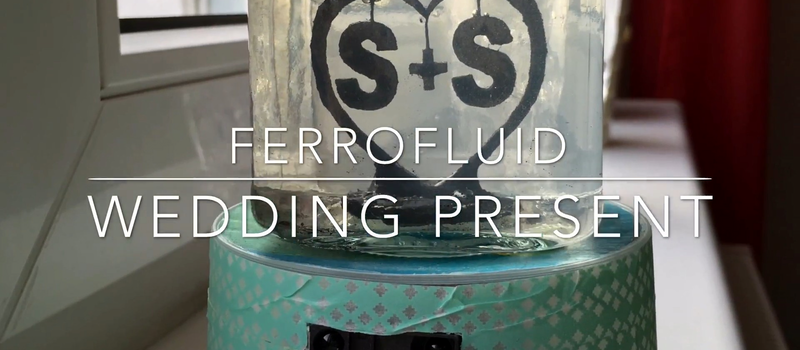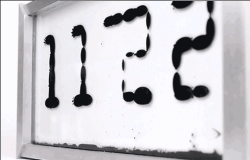It’s more of a half-fail than a full fail, but [Basti] is accustomed to getting things right (eventually) so it sticks in his craw that he wasn’t able to fully realize his ferrofluid dreams (German, translated here). Anyway, fail or demi-fail, the project is certainly a lesson in the reality of ferrofluid.
We’ve all seen amazing things done with ferrofluid and magnets. How hard can it be to make an interactive ferrofluid wedding present for his sister? Where ferrofluid spikes climb up a beautifully cut steel heart in a jar? (Answer: very hard.)
First off, ferrofluid is expensive, and estimating the right amount for the project is tricky. [Basti] got 20 ml. Next, it stains everything in the way that only suspended nano-particles of rust can. Simulations, like every other tool, are useful but in certain strange applications (like moving ferrofluid around in a bottle) are only guidelines. The electromagnet ended up not producing enough field and the driver circuit got pretty warm. But he had first results.
Ordering a liter of ferrofluid solved the quantity problem, and significantly lightened his wallet. Rather than drive the magnet’s MOSFET in analog mode or get into high-frequency switching, he decided to just turn the field on and off. Finally, the ferrofluid would just stick to everything on the inside of the glass jar, muddying the view. The solution ended up being a little bit of detergent in the water, which helps the ferrofluid slide off the glass.
The end result is short of [Basti]’s dreams, but not too shabby either, so maybe it’s only a fail from a price-performance standpoint. Check out the video below and decide for yourself.
Anyway, the whole spirit of Fail of the Week is to help other folks by pointing out one’s own pratfalls. So thanks for that, [Basti]! And good luck selling off the rest of your ferrofluid.
We should probably add this to our list of hacker folk wisdom:
- All projects involving Peltier devices ultimately end in disappointment.
- Ferrofluid is trickier than it looks on YouTube.



 Fail of the Week is a Hackaday column which celebrates failure as a learning tool. Help keep the fun rolling by writing about your own failures and
Fail of the Week is a Hackaday column which celebrates failure as a learning tool. Help keep the fun rolling by writing about your own failures and 













It worked right? I wouldn’t consider this a fail.
Yeah, and it was super exciting.
Hackaday can’t call this fail but the commentators have to comment on every hackaday post: “OMG THIS IS NOT A HACK”.
Hello, welcome to Planet Earth where all people have different ideas and opinions.
They can’t help it–it’s a Pavlovian response common to lower life forms.
Don’t blame HAD. He himself called it a fail . RTFL.
**read the full article
Spend over 300 € for this unspectacular tiny glas is for me a kind of a fail… :-/
Even if it had worked, at that price it is still a fail.
That’s what they said in the post already. Why are you pointing it out like you are the only one to think of it?
“…so maybe it’s only a fail from a price-performance standpoint.”
So what ever is written in the article can never been mentioned again. Never!
Do you want a prize or something? Maybe one that says “You’re ‘special’!” ?
No fail! One in a million present! Like!
I’d be curious to know what detergent and concentration this person is using. A good recipe is hard to find.
This is not a fail. It is hard (and expensively) won knowledge and experience. A bargain, if you ask me. Thanks for sharing. It takes courage.
It’s 300 Euros and, what the fluid just flicks about? Like, that’s it? I thought from the still it’d climb up and form the heart itself somehow, or something.
It’s also pretty ugly. He really should’ve gone to the effort of making it prettier, using a wooden case or whatever, the jam jar and wrapping paper look means that’s going to end up stashed in the attic pretty soon. People don’t like having ugly hacks as furniture.
Srsly though, have I missed something? Is it supposed to do anything? It can’t just be 300 Euro for a light sensor and an electromagnet, make a bit of ferrofluid go “boing”. CAN’T be!
when you are not good at aesthetic, you try to enhance with some magical tech,
and there comes the fail
Ugly. But one deserves only that for … marrying